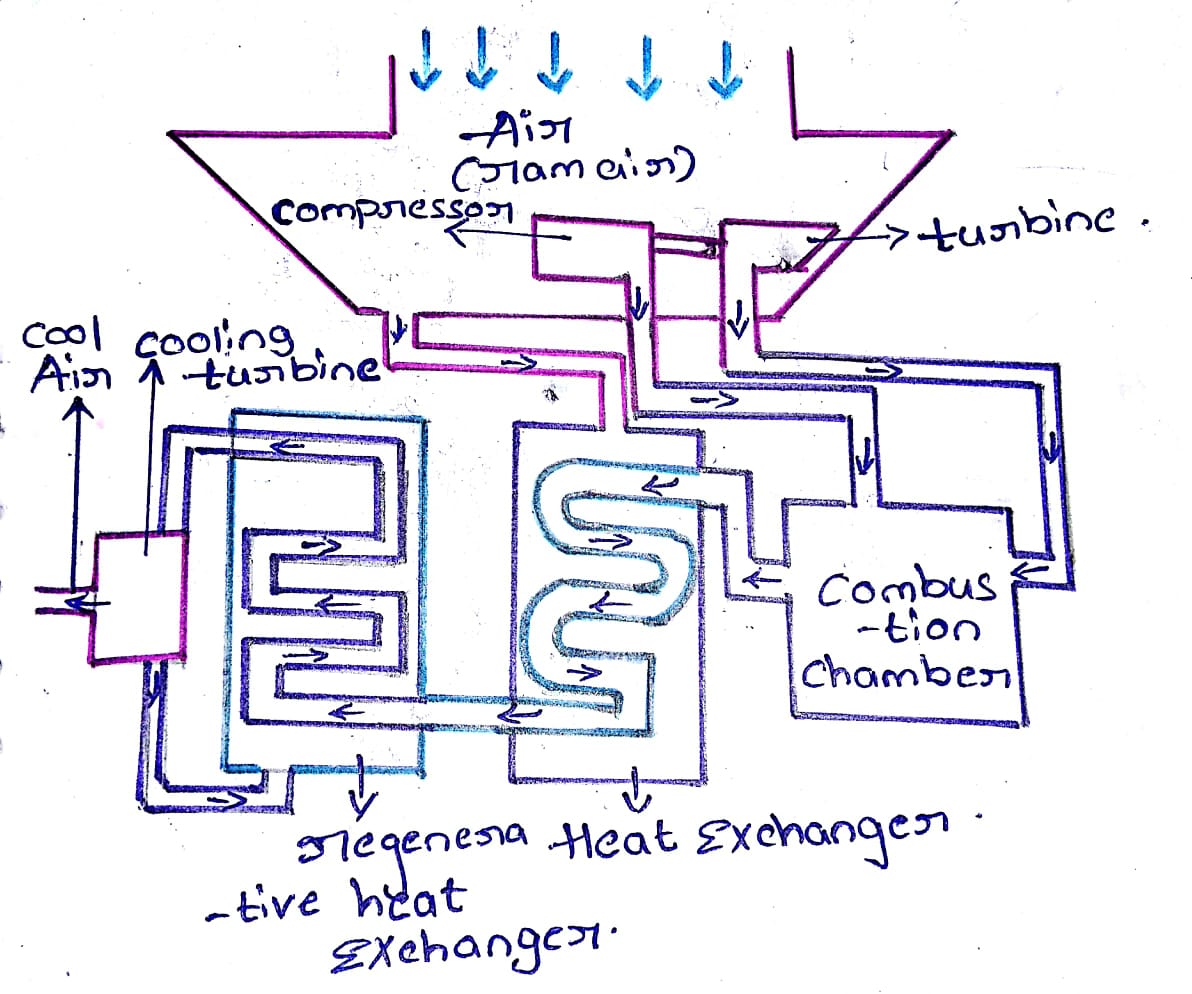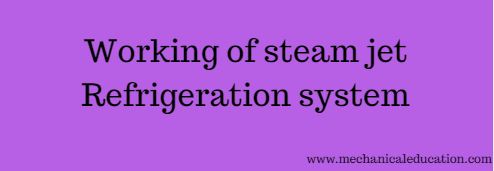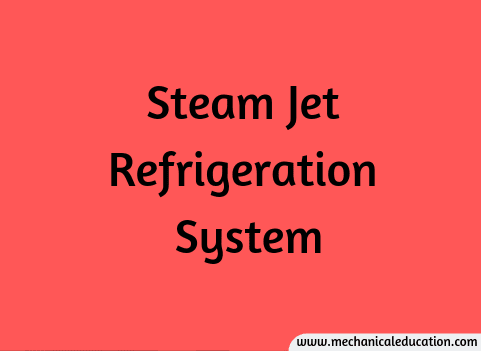What is Hermetic Sealed Compressor?
A hermetic sealed compressor, often referred to simply as a hermetic compressor, is a type of compressor used in various refrigeration and air conditioning systems. The term “hermetic” refers to the sealing of the compressor’s motor and compressor within a single housing. This design prevents the refrigerant and other internal components from interacting with the external environment. Here are the key characteristics and features of hermetic sealed compressors:
- Sealed Design: The compressor is enclosed in a sealed housing, which prevents the refrigerant and lubricating oil from leaking out and contaminants from entering.
- Compact and Lightweight: Hermetic compressors are often more compact and lightweight compared to open-type compressors because they don’t require external components like shaft seals and bearings.
- Simplified Construction: The hermetic design simplifies the construction of the compressor and eliminates the need for certain maintenance tasks associated with open-type compressors.
- Commonly Used in Household Appliances: Hermetic sealed compressors are commonly found in household appliances such as refrigerators and air conditioners. The compact design makes them suitable for applications where space is limited.
- Reduced Vibrations: The sealed design helps in reducing vibrations and noise levels associated with the compressor operation.
- Limited Repairability: While hermetic compressors are efficient and reliable, they are often considered non-serviceable. In case of failure, the entire compressor unit may need to be replaced rather than repaired.
- Efficient Cooling: Hermetic sealed compressors contribute to efficient cooling systems by compressing and circulating the refrigerant, which facilitates the heat exchange process.
It’s important to note that hermetic sealed compressors are just one type of compressor used in refrigeration and air conditioning systems. Other types include semi-hermetic compressors and open-type compressors, each with its own set of advantages and applications.
Hermetic Sealed Compressor Working principle?
The working principle of a hermetic sealed compressor involves the compression of refrigerant within a sealed housing, combining the electric motor and the compressor into a single unit. This design prevents refrigerant leakage and external contamination. Here is an overview of the working principle of a hermetic sealed compressor:
- Sealed Housing:
- The compressor consists of a sealed housing, usually made of metal, where both the electric motor and the compressor are housed. This housing is typically welded or brazed to ensure airtight and watertight integrity.
- Motor-Compressor Integration:
- The electric motor and the compressor are integrated into the same sealed housing. This integration eliminates the need for external shaft seals or couplings, reducing the risk of refrigerant leaks.
- Motor Operation:
- The electric motor is responsible for driving the compressor. When the motor is energized, it generates rotational motion, which is transferred to the compressor.
- Compressor Operation:
- The compressor, driven by the motor, starts the compression cycle. The compressor draws low-pressure, low-temperature refrigerant vapor from the evaporator or suction line.
- Compression Process:
- The refrigerant vapor is compressed within the sealed housing. As the compressor compresses the refrigerant, both its pressure and temperature increase significantly.
- Discharge of High-Pressure Refrigerant:
- The compressed refrigerant, now in a high-pressure, high-temperature state, is discharged from the compressor. This discharge occurs through a discharge port, leading to the condenser or the high-pressure side of the refrigeration system.
- Condensation in the Condenser:
- In the condenser, the high-pressure, high-temperature refrigerant releases heat to the surrounding environment, causing it to condense into a high-pressure liquid.
- Expansion Valve:
- The high-pressure liquid refrigerant then passes through an expansion valve, where its pressure and temperature drop rapidly. This results in the formation of a low-pressure, low-temperature refrigerant.
- Evaporation in the Evaporator:
- The low-pressure refrigerant enters the evaporator, where it absorbs heat from the surrounding space or medium, causing it to evaporate into a low-pressure vapor.
- Return to Compressor:
- The low-pressure vapor returns to the hermetic sealed compressor, completing the refrigeration cycle. The cycle repeats as the compressor continues to draw in, compress, and discharge refrigerant.
The hermetic sealed compressor’s working principle is based on the closed-loop cycle of compression, condensation, expansion, and evaporation, which allows for the efficient transfer of heat and the generation of cooling effects in refrigeration and air conditioning systems. The hermetic sealing ensures that the motor and compressor components remain isolated from the external environment, providing advantages such as reduced refrigerant leakage and increased reliability.
Hermetic Sealed Compressor of Applications?
The hermetic sealed compressor finds applications in various industries and is commonly used in systems that require efficient compression of refrigerants. Here are some specific applications where hermetic sealed compressors are utilized:
- Refrigerators:
- Hermetic sealed compressors are a key component in household refrigerators and freezers, where they are responsible for compressing the refrigerant to create the cooling effect inside the appliance.
- Air Conditioning Units:
- Hermetic compressors are widely used in air conditioning systems for homes, offices, and commercial spaces. They play a crucial role in the compression and circulation of refrigerant for cooling purposes.
- Freezers:
- Commercial and industrial freezers often employ hermetic sealed compressors to maintain low temperatures necessary for preserving frozen food products.
- Dehumidifiers:
- Hermetic sealed compressors are utilized in dehumidifiers to compress and circulate refrigerants, aiding in the removal of moisture from the air.
- Heat Pumps:
- In heat pump systems used for both heating and cooling, hermetic compressors are integral for compressing and circulating refrigerants to transfer heat between indoor and outdoor environments.
- Beverage Coolers:
- Commercial beverage coolers, vending machines, and other refrigeration units designed for cooling beverages often feature hermetic sealed compressors.
- Mobile Refrigeration:
- Portable refrigerators and coolers used for camping, boating, or transporting temperature-sensitive goods frequently use hermetic compressors due to their compact design and efficiency.
- Water Dispensers:
- Water dispensers with cooling capabilities commonly incorporate hermetic sealed compressors to maintain the desired temperature of the water.
- Residential Heat Pump Water Heaters:
- Hermetic compressors play a role in residential heat pump water heaters, where they help transfer heat from the air to heat water for domestic use.
- Medical Refrigeration:
- Hermetic sealed compressors are used in medical and laboratory refrigeration systems to maintain low temperatures for storing pharmaceuticals, vaccines, and biological samples.
- Automotive Air Conditioning:
- Many automotive air conditioning systems utilize hermetic compressors for efficient cooling of the vehicle interior.
- Compact Refrigeration Units:
- Small-scale refrigeration units, such as mini-fridges and countertop refrigerators, often feature hermetic sealed compressors due to their compact size and simplicity.
- HVAC Systems:
- In smaller heating, ventilation, and air conditioning (HVAC) systems, hermetic sealed compressors may be used to provide cooling capabilities.
- Commercial Refrigeration:
- Certain types of commercial refrigeration equipment, such as display cases and ice cream freezers, may utilize hermetic sealed compressors for efficient refrigeration.
These applications highlight the versatility and efficiency of hermetic sealed compressors in providing cooling solutions across various industries, from residential and commercial refrigeration to HVAC systems and portable cooling devices.
Advantages of Hermetic Sealed Compressor?
Hermetic sealed compressors offer several advantages, making them suitable for various applications, especially in smaller refrigeration and air conditioning systems. Here are some key advantages of hermetic sealed compressors:
- Compact Design:
- Hermetic compressors have a compact and lightweight design. The integration of the motor and compressor into a single sealed unit allows for a smaller overall footprint, making them ideal for applications with limited space.
- Reduced Refrigerant Leakage:
- The hermetic sealing of the motor and compressor within a welded or brazed housing minimizes the risk of refrigerant leakage. This is particularly important in maintaining the system’s efficiency and preventing environmental impact.
- Simplified Installation:
- Hermetic compressors are pre-packaged, sealed units, simplifying the installation process. Their design eliminates the need for external shaft seals or couplings, reducing installation complexities.
- Lower Maintenance Requirements:
- Due to their sealed design, hermetic compressors generally have lower maintenance requirements compared to open-type compressors. There are fewer points of potential failure, and the internal components are protected from external contaminants.
- Cost-Effectiveness:
- The manufacturing process for hermetic compressors is often simpler, leading to lower production costs. Additionally, their compact design and reduced maintenance contribute to cost-effectiveness over the lifespan of the system.
- Ease of Replacement:
- In the event of a malfunction, hermetic compressors are often replaced as a single sealed unit rather than being repaired. This simplifies replacement procedures, reduces downtime, and ensures a quick and straightforward solution.
- Reduced Vibration and Noise:
- The integration of the motor and compressor within a sealed housing often results in reduced vibration and noise levels. This can contribute to a quieter and more stable operation of the refrigeration or air conditioning system.
- Environmental Considerations:
- The sealed design of hermetic compressors helps prevent the release of refrigerants into the atmosphere, contributing to environmental conservation and compliance with regulations related to refrigerant handling.
- Suitability for Small Appliances:
- Hermetic compressors are commonly used in small refrigeration and air conditioning appliances, such as refrigerators, freezers, window air conditioners, and dehumidifiers, where their advantages are particularly beneficial.
- Energy Efficiency:
- The integration of the motor and compressor allows for better energy efficiency. The compact design and reduced internal losses contribute to improved overall system efficiency.
While hermetic sealed compressors offer these advantages, it’s important to note that they may not be suitable for all applications. In larger systems or those requiring field serviceability and repairability, alternative compressor designs may be preferred. The selection of the compressor type depends on specific application requirements and considerations.
Disadvantages of Hermetic Sealed Compressor?
While hermetic sealed compressors offer several advantages, they also have certain disadvantages that should be considered in specific applications. Here are some common disadvantages associated with hermetic sealed compressors:
- Limited Repairability:
- One of the significant drawbacks of hermetic compressors is their limited repairability. In case of a malfunction or failure, the entire sealed unit is often replaced rather than repaired. This can lead to increased costs compared to repairing individual components.
- Incompatibility with Large Systems:
- Hermetic compressors are typically designed for smaller refrigeration and air conditioning systems. In larger systems where higher capacities are required, multiple hermetic compressors may be needed, which can increase the complexity of the system.
- Limited Power Range:
- Hermetic compressors are generally designed for a specific power range. For applications with varying load conditions or those requiring a wide range of capacities, other compressor types with better adaptability may be more suitable.
- Heat Dissipation Challenges:
- The sealed design of hermetic compressors can pose challenges for heat dissipation. In some cases, cooling the motor and compressor within the sealed housing may be less efficient compared to external cooling methods used in open-type compressors.
- Susceptibility to Overheating:
- In certain operating conditions or if there is a lack of proper cooling, hermetic compressors may be susceptible to overheating. Overheating can lead to premature wear and potential damage to internal components.
- Application Restrictions:
- Hermetic compressors are not suitable for all applications. They may not be the best choice for systems with high-duty cycles, continuous operation, or extreme operating conditions.
- Higher Initial Costs:
- While hermetic compressors are generally cost-effective over their lifespan, the initial purchase cost may be higher compared to certain open-type compressors. This can be a consideration for budget-conscious applications.
- Potential for Contamination:
- In the event of a motor or compressor failure, contaminants such as metal particles or lubricating oil may enter the refrigeration system. This can necessitate thorough system cleaning and flushing during the replacement process.
- Environmental Impact During Replacement:
- The replacement of a hermetic compressor involves disposing of the entire sealed unit, which may have environmental implications if not properly handled and recycled.
- Limited Cooling Capacity Control:
- Hermetic compressors may have limitations in capacity control options compared to some other compressor types. This can affect their ability to efficiently modulate capacity based on varying load conditions.
Despite these disadvantages, hermetic sealed compressors continue to be widely used in various applications, particularly in smaller refrigeration and air conditioning systems where their benefits often outweigh their drawbacks. Careful consideration of the specific requirements of the application is essential when choosing between compressor types.
Frequently Asked Questions – FAQs
Are hermetic compressors energy-efficient?
Yes, hermetic compressors can be energy-efficient. Their integrated design allows for effective energy transfer, and they are often equipped with features to optimize energy consumption.
Can hermetic sealed compressors be repaired if they malfunction?
Generally, hermetic sealed compressors are not designed for field repair. In case of a malfunction, it is often more practical to replace the entire sealed unit rather than attempting to repair individual components.
Are there environmental considerations when disposing of hermetic sealed compressors?
Yes, proper disposal and recycling of hermetic sealed compressors are essential due to the potential presence of refrigerants and other materials. Recycling facilities or authorized disposal centers should be used.
How is the cooling capacity of a hermetic sealed compressor determined?
The cooling capacity is determined by factors such as the type of refrigerant used, the design of the compressor, and the operating conditions specified by the manufacturer.
What precautions should be taken during the installation of hermetic sealed compressors?
Are there environmental considerations when disposing of hermetic sealed compressors?
Yes, proper disposal and recycling of hermetic sealed compressors are essential due to the potential presence of refrigerants and other materials. Recycling facilities or authorized disposal centers should be used.
Can hermetic compressors be used in large industrial refrigeration systems?
While hermetic compressors are commonly used in smaller applications, they may not be the most suitable choice for large industrial systems requiring higher capacities.
What are the advantages of using a hermetic sealed compressor?
Advantages include a compact design, reduced risk of refrigerant leakage, simplicity, lower maintenance requirements, and suitability for various cooling applications.
How does a hermetic sealed compressor work?
The hermetic sealed compressor works by compressing refrigerant within a closed-loop system. The integrated motor drives the compressor, initiating the compression cycle that results in the cooling effect in refrigeration and air conditioning applications.
In which applications are hermetic sealed compressors commonly used?
Hermetic sealed compressors are commonly used in refrigerators, air conditioning units, freezers, heat pumps, dehumidifiers, beverage coolers, and various other cooling appliances.
What is a hermetic sealed compressor?
A hermetic sealed compressor is a type of compressor used in refrigeration and air conditioning systems, where both the electric motor and the compressor are enclosed within a single sealed housing.



